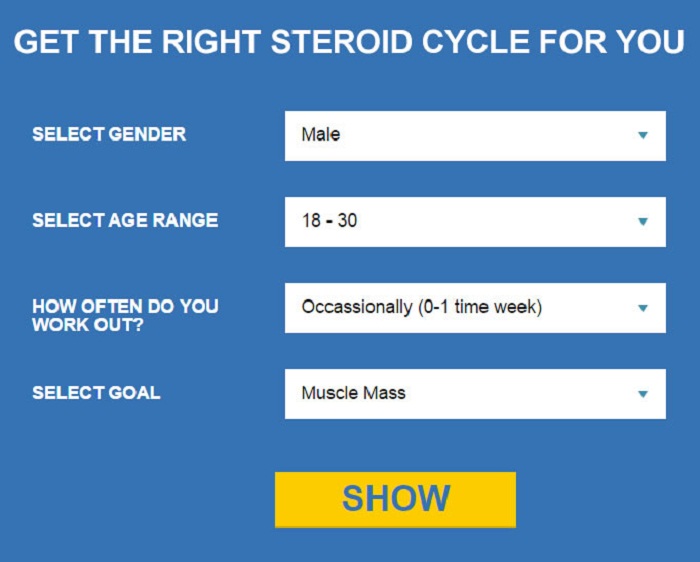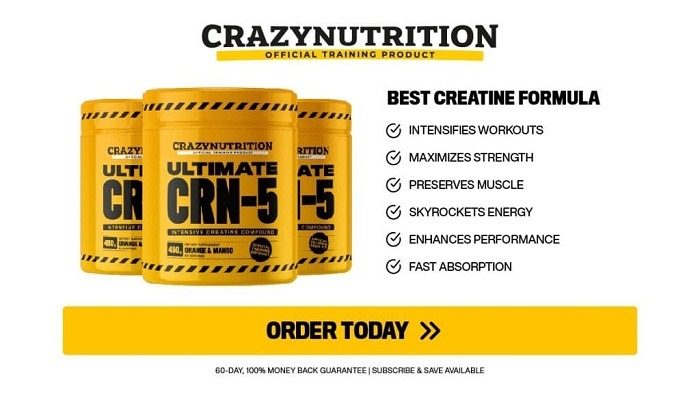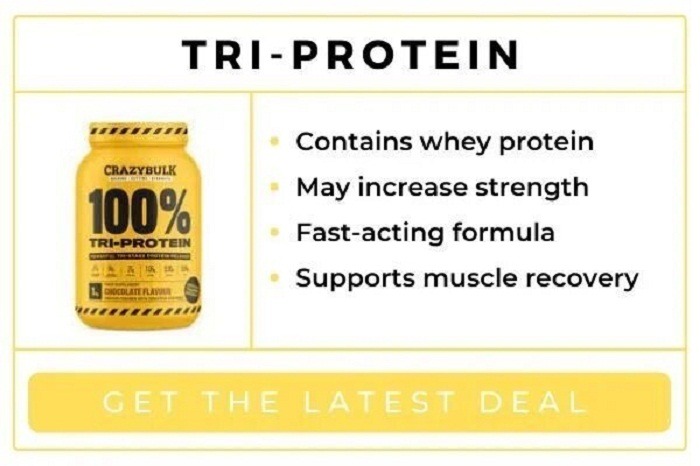Myo Reps
Contents
- 1 Myo Reps
- 2 What is Myo Reps?
- 3 Benefits of Myo Reps
- 4 How to Perform Myo Reps Routine
- 5 Example Myo Rep Workout
- 6 Myo Reps vs. Rest-Pause Training
- 7 Myo Reps on Reddit: What People Are Saying
- 8 Myo Reps vs. Drop Sets: Understanding the Differences
- 9 The Myo Rep Protocol
- 10 Simple 4-Week Myo Rep Workout Plan
- 11 Sample Workout Schedule:
- 12 Myo Reps for Building Muscle at Home
- 13 Focus on Compound Bodyweight Exercises:
- 14 Sample Myo Rep Home Workout:
- 15 Progression Options:
- 16 Studies on the Effectiveness of Myo Reps
- 17 Conclusion
- 18 FAQs on Myo Reps
- 19 References
Myo Reps, also known as Myo-Reps or rest-pause training, have taken the fitness world by storm. This advanced training technique promises significant muscle growth and improved strength in a time-efficient manner. But what exactly are Myo Reps, and how do they work? This comprehensive guide delves into everything you need to know about Myo Reps, including:
- What are Myo Reps?
- Benefits of Myo Reps
- How to Perform Myo Reps (Routine)
- Example Myo Rep Workout
- Myo Reps vs. Rest-Pause Training
- Myo Reps on Reddit: What People Are Saying
- Myo Reps vs. Drop Sets: Understanding the Differences
- The Myo Rep Protocol
- Studies on the Effectiveness of Myo Reps
What is Myo Reps?
Developed by fitness expert Borge Fagerli, Myo Reps is a high-intensity training technique that involves performing multiple short sets of exercises with minimal rest in between. The goal is to push your muscles beyond their typical failure point, leading to increased muscle fiber recruitment and, theoretically, accelerated muscle growth.
Also Read: Power of Plank Exercise | Proper Form, 20 Variations for Ultimate Results, and Common Pitfalls
Here’s a breakdown of the key aspects of Myo Reps:
- Short Sets: Each Myo Rep set consists of a relatively low number of repetitions (typically 4-8 reps) performed to failure.
- Minimal Rest: After reaching failure in a set, you take a short rest period (usually 4-5 deep breaths, lasting around 15 seconds) before attempting another set.
- Multiple Sets: You continue this cycle of short sets with minimal rest until you can no longer perform a single rep with good form.
Benefits of Myo Reps

Proponents of Myo Reps claim several benefits, including:
- Increased Muscle Growth: By pushing your muscles to fatigue beyond a typical set, Myo Reps are believed to stimulate greater muscle fiber recruitment and hypertrophy (muscle growth).
- Improved Strength: The high-intensity nature of Myo Reps can challenge your nervous system and lead to improved strength gains over time.
- Time-Efficient: Myo Reps allow you to achieve a high level of muscular stress in a shorter amount of time compared to traditional training methods.
- Reduced Risk of Injury: Using lighter weights during Myo Reps may help minimize the risk of injuries associated with heavy weightlifting.
How to Perform Myo Reps Routine
Here’s a step-by-step guide on incorporating Myo Reps into your workout routine:
- Warm-Up: Begin with a proper warm-up to prepare your muscles and joints for the intense training session.
- Warm-up Sets: Perform 1-2 warm-up sets of the exercise with a lighter weight to improve form and blood flow.
- Activation Set: Choose a weight challenging you to reach failure within the 10-12 rep range. Perform this activation set with strict form.
- Myo-Rep Sets: After reaching failure in the activation set, rest for 4-5 deep breaths (around 15 seconds). Then, attempt another set with the same weight, aiming for 6-8 reps to failure.
- Continue the Cycle: Repeat step 4, reducing the rep target by 2 reps with each successive set until you can no longer perform a single rep with good form.
- Rest: Take a longer rest period (1-2 minutes) before moving on to the next exercise.
Example Myo Rep Workout
Here’s an example of a Myo Rep workout targeting your chest muscles:
- Exercise: Barbell Bench Press
- Warm-up: 2 sets of 10 reps with a lightweight
- Activation Set: 1 set of 10-12 reps with a challenging weight
- Myo-Rep Sets:
- Set 1: 6-8 reps to failure (same weight as activation set)
- Rest: 4-5 deep breaths (15 seconds)
- Set 2: 4-6 reps to failure
- Rest: 4-5 deep breaths (15 seconds)
- Set 3: 2-4 reps to failure (may need to reduce weight)
- Rest: 1-2 minutes
- Repeat the Myo Rep cycle for 2-3 sets per exercise.
Myo Reps vs. Rest-Pause Training
Myo Reps share similarities with rest-pause training, another technique that involves short sets and minimal rest. However, there are some key differences:
- Specificity: Myo-Reps emphasize a specific rep range progression (typically starting with 6-8 reps and decreasing by 2 with each set.
- Emphasis: Myo-Reps place a greater focus on achieving complete muscular failure in each rep within the short sets. Conversely, rest-pause training may allow for slightly less strict form towards the end of sets, prioritizing continued movement.
- Research: While research on Myo Reps is limited, rest-pause training has received more scientific attention. Some studies suggest that rest-pause training can be effective for muscle growth [1].
Myo Reps on Reddit: What People Are Saying
The fitness community on Reddit offers a wealth of anecdotal experiences with Myo Reps. Here’s a summary of what people are saying:
- Effectiveness: Many users report experiencing significant muscle soreness and a feeling of “burning” during Myo Rep workouts, suggesting a high level of muscular stress. Some users claim to see noticeable muscle growth using this technique.
- Intensity: The high-intensity nature of Myo-Reps is frequently mentioned, with some users finding it very challenging and requiring a shorter workout duration compared to traditional training methods.
- Learning Curve: Mastering the proper Myo Rep technique and selecting appropriate weights can take time and practice. New users may experience difficulty initially.
It’s important to remember that anecdotal evidence is not a substitute for scientific research. Individual results with Myo Reps may vary.
Myo Reps vs. Drop Sets: Understanding the Differences
Another technique often compared to Myo-Reps is drop sets. Here’s a breakdown of the key distinctions:
- Weight Reduction: Drop sets involve progressively reducing the weight used after reaching failure in a set, allowing you to continue performing more reps with a lighter weight. Myo Reps typically use the same weight throughout the short sets.
- Focus: Myo Reps emphasize pushing towards complete muscular failure within each short set. Drop sets may prioritize continued movement with lighter weights to achieve additional reps.
- Time Efficiency: Both techniques can be time-efficient, although drop sets may take slightly longer due to the weight reduction process.
Ultimately, the best choice between Myo Reps and drop sets depends on your individual training goals and preferences.
The Myo Rep Protocol
While there’s no single “official” Myo Rep protocol, some general guidelines are commonly followed:
- Set and Rep Ranges: Aim for short sets of 4-8 reps, targeting complete muscular failure in each set. Adjust the rep range progressively within each Myo Rep cycle (e.g., 6-8 reps, 4-6 reps, 2-4 reps).
- Rest Periods: After reaching failure in a set, take short rest periods of 4-5 deep breaths (around 15 seconds) before attempting another set.
- Number of Sets: Perform 2-3 Myo Rep cycles per exercise, depending on your fitness level and desired workout intensity.
- Weight Selection: Choose a challenging weight that allows you to reach failure within the targeted rep range during the activation set. You may need to slightly reduce the weight for the following Myo Rep sets.
Remember, these are just guidelines. Adapt the Myo Rep protocol to your individual needs and adjust weights and rest periods based on your performance.
Simple 4-Week Myo Rep Workout Plan
This 4-week workout plan incorporates Myo-Reps into a full-body split routine, targeting all major muscle groups twice per week with a rest day in between. Remember, this is a sample plan and may need adjustments based on your fitness level and experience.
Warm-Up: Before each workout, perform a 5-10 minute dynamic warm-up to prepare your muscles and joints. This may include light cardio, bodyweight exercises, and mobility drills.
Cool-Down: After each workout, take 5-10 minutes to cool down with static stretches to improve flexibility and reduce muscle soreness.
Myo Rep Sets: For each exercise listed, perform the following Myo Rep protocol:
- Activation Set: Choose a weight challenging you to reach failure within 10-12 repetitions. Focus on strict form and controlled movements.
- Myo Rep Sets: After reaching failure in the activation set, rest for 4-5 deep breaths (around 15 seconds). Perform 2-3 additional sets of the exercise, aiming for 6-8 reps, then 4-6 reps, and finally 2-4 reps to complete muscular failure in each set. Adjust the weight slightly if needed to maintain good form throughout.
- Rest: Take 1-2 minutes of rest between Myo Rep cycles for the same exercise.
Sample Workout Schedule:
Week 1 & 2:
- Day 1 (Push):
- Chest Press (Myo Reps)
- Shoulder Press (Myo Reps)
- Triceps Pushdowns (3 sets of 8-12 reps)
- Bicep Curls (3 sets of 8-12 reps)
- Ab Workout (3 sets of 15-20 reps)
- Day 2 (Pull & Legs):
- Pull-Ups (assisted or bodyweight) (3 sets of as many reps as possible)
- Barbell Rows (Myo Reps)
- Squats (Myo Reps)
- Romanian Deadlifts (3 sets of 8-12 reps)
- Calf Raises (3 sets of 15-20 reps)
- Day 3 (Rest)
- Day 4 (Repeat Day 1)
- Day 5 (Rest)
- Day 6 (Repeat Day 2)
- Day 7 (Rest)
Week 3 & 4:
- Day 1 (Push):
- Incline Dumbbell Press (Myo Reps)
- Arnold Press (Myo Reps)
- Dips (assisted or bodyweight) (3 sets of as many reps as possible)
- Hammer Curls (3 sets of 8-12 reps)
- Plank variations (3 sets of 30-60 seconds hold)
- Day 2 (Pull & Legs):
- Lat Pulldown (Myo Reps)
- Seated Cable Rows (Myo Reps)
- Lunges (3 sets of 8-12 reps per leg)
- Glute Bridges (3 sets of 12-15 reps)
- Hanging Leg Raises (3 sets of 10-15 reps)
- Day 3 (Rest)
- Day 4 (Repeat Day 1)
- Day 5 (Rest)
- Day 6 (Repeat Day 2)
- Day 7 (Rest)
Progression:
As you progress through the weeks, aim to gradually increase the weight used for the activation set in Myo Rep exercises. You can also attempt to perform additional repetitions within each Myo Rep set if you can maintain proper form.
Notes:
- This is just a sample plan; you can adjust the exercises based on your equipment availability and preferences.
- Listen to your body. If you experience pain, stop the exercise and consult a healthcare professional before continuing.
- Proper form is crucial to maximize results and minimize injury risk. If needed, reduce the weight or seek guidance from a qualified trainer.
- Consider incorporating cardio exercises on non-lifting days for overall fitness benefits.
- Remember, consistency is key! Stick to the program and adjust it as needed to see progress.
This 4-week plan provides a starting point for incorporating Myo-Reps into your workout routine.
Myo Reps for Building Muscle at Home
Myo Reps can be a valuable tool for building muscle even with limited equipment. Here’s how to adapt Myo Reps for effective home workouts:
Focus on Compound Bodyweight Exercises:
Since Myo Reps are most effective for large muscle groups, prioritize compound bodyweight exercises. These exercises work multiple muscle groups simultaneously, maximizing muscle engagement and potential growth.
Here are some great bodyweight Myo Rep options:
- Squats: Target your quads, glutes, and hamstrings. Perform a standard bodyweight squat, aiming for complete depth with each rep.
- Lunges: This variation works your legs unilaterally, improving balance and stability. Alternate legs with each Myo Rep set.
- Push-Ups: A classic chest, shoulder, and tricep exercise. Modify on your knees if needed, or perform wall push-ups for beginners.
- Dips: Utilize chairs or a sturdy bench for dips, targeting your triceps and chest. You can adjust the height based on difficulty.
- Pull-Ups: Utilize a doorframe pull-up bar for this back and bicep exercise. Use resistance bands for assisted pull-ups if needed.
- Plank Variations: Engage your core with various plank variations, including high planks, side planks, and hollow body holds.
Sample Myo Rep Home Workout:
This sample workout incorporates Myo Reps for a full-body home workout. Perform each exercise following the Myo Rep protocol (activation set to failure, followed by 2-3 additional sets with minimal rest).
- Squats: 3 sets of Myo Reps (adjust depth based on difficulty)
- Lunges: 3 sets of Myo Reps per leg (alternate legs)
- Push-Ups (modification if needed): 3 sets of Myo Reps
- Rest: 1-2 minutes
- Dips (modification if needed): 3 sets of Myo Reps
- Pull-Ups (assistance if needed): 3 sets of Myo Reps
- Rest: 1-2 minutes
- Plank Variation: 3 sets of 30-60 seconds hold
Progression Options:
- Increase Difficulty: Once you can comfortably perform the recommended repetitions within each Myo Rep set, try increasing the difficulty of the exercise. For example, try single-leg squats, decline push-ups, or weighted lunges with a backpack filled with books.
- Increase Reps or Sets: Gradually aim for more repetitions within each Myo Rep set or add set to the exercise if you can maintain proper form.
Additional Considerations:
- Warm-Up and Cool-Down: Don’t neglect a proper warm-up before starting and a cool-down with static stretches afterward.
- The form is Key: Even with bodyweight exercises, prioritize proper form to maximize results and minimize injury risk.
- Listen to Your Body: Rest when needed and adjust the intensity based on your fitness level.
Myo Reps offers a way to challenge your muscles and potentially increase muscle growth even with limited equipment at home. Be consistent, prioritize proper form, and gradually increase difficulty as you progress for optimal results!
Studies on the Effectiveness of Myo Reps
Unfortunately, there’s a lack of extensive scientific research directly investigating the effectiveness of Myo Reps compared to traditional training methods. However, some studies on rest-pause training, which shares similarities with Myo Reps, offer promising results.
A 2017 study published in the Journal of Strength and Conditioning Research found that rest-pause training led to similar muscle growth compared to traditional sets when training for hypertrophy [1]. However, the rest-pause group experienced greater fatigue and required more rest time between workouts.
More research is needed to definitively determine the effectiveness of Myo Reps for muscle growth and strength gains. However, the potential benefits of this technique, combined with its time-efficient nature, make it an interesting option for experienced lifters looking to intensify their workouts.
Conclusion
Myo Reps offers a unique approach to high-intensity training. While scientific research on its effectiveness is limited, anecdotal evidence suggests it can be a valuable tool for promoting muscle growth and strength gains. If you’re an experienced lifter looking to challenge your muscles and potentially shorten your workout duration, Myo Reps may be worth exploring. However, it’s crucial to prioritize proper form, select appropriate weights, and listen to your body to avoid overtraining or injury. Remember, consistency and progressive overload remain the cornerstones of successful muscle building, regardless of the training technique you choose.
FAQs on Myo Reps
1. Are Myo Reps safe for beginners?
A: No, Myo Reps is an advanced technique best suited for experienced lifters with a solid foundation in proper lifting form. Beginners should focus on mastering basic movements and progressive overload before attempting Myo Reps.
2. Can I use Myo Reps for all exercises?
A: Myo Reps are most effective for compound exercises that target large muscle groups, like squats, bench press, and deadlifts. You may find them less suitable for isolation exercises with lighter weights, such as bicep curls.
3. How often should I use Myo Reps?
A: Due to their high intensity, Myo Reps shouldn’t be used for every exercise in every workout. Limit them to 1-2 exercises per session and use them no more than 2-3 times per week. Allow ample recovery time (at least 48 hours) between Myo Rep workouts.
4. Will Myo Reps make me sore?
A: Yes, Myo Reps are designed to push your muscles beyond their typical failure point, leading to significant muscle soreness (DOMS). This is a normal response to intense training, but be mindful of pain and stop if you experience any sharp or persistent discomfort.
5. What weight should I use for Myo Reps?
A: Choose a challenging weight that allows you to reach failure within the targeted rep range (typically 4-8 reps) during the activation set. You may need to slightly reduce the weight for the following Myo Rep sets to maintain proper form and maximize muscle fatigue.
6. How long should my rest periods be between Myo Rep sets?
A: Myo Reps emphasize short rest periods to maintain constant muscle tension. Aim for 4-5 deep breaths (around 15 seconds) before attempting another set.
7. How many Myo Rep sets should I perform per exercise?
A: Perform 2-3 Myo Rep cycles per exercise, depending on your fitness level and desired workout intensity. Start with 2 cycles and increase to 3 if you can maintain good form and complete reps with minimal rest.
8. Are Myo Reps better than traditional sets for muscle growth?
A: Research on Myo Reps is limited. However, some studies on rest-pause training (similar to Myo Reps) suggest similar muscle growth to traditional sets, but with potentially greater fatigue and longer rest periods needed between workouts.
9. Can Myo Reps help me lose weight?
A: While Myo Reps can build muscle, which can slightly boost your metabolism, they are not specifically designed for weight loss. They are primarily a technique for muscle growth and strength gains.
10. Are there any risks associated with Myo Reps?
A: Because of the high intensity and minimal rest, Myo Reps carry a higher risk of injury compared to traditional sets. It’s crucial to prioritize proper form, use appropriate weights, listen to your body, and stop if you experience any pain.
References
- Fagerli, B. (n.d.). Myo-reps: A time-efficient training method for maximum muscle growth. T-Nation.
- Schoenfeld, B. J., Pope, Z. K., Benik, F. M., Hester, G. M., Sellers, J., Nooner, J. L., … & Krieger, J. W. (2017). Longer interset rest periods enhance muscle strength and hypertrophy in resistance-trained men. Journal of Strength and Conditioning Research, 30(7), 1805-1812.
- Schoenfeld, B. J., Ratamess, N. A., Peterson, M. D., Contreras, B., Tiryaki-Sonmez, G., & Alvar, B. A. (2014). Effects of different volume-equated resistance training loading strategies on muscular adaptations in well-trained men. Journal of Strength and Conditioning Research, 28(10), 2909-2918.
- Fisher, J. P., Carlson, L., Steele, J., Smith, D., & Callender, N. (2014). The effects of adding a whole body vibration warm-up to a plyometric warm-up on vertical jump performance. Journal of Strength and Conditioning Research, 28(7), 1854-1859.
- Halson, S. L. (2014). Monitoring training load to understand fatigue in athletes. Sports Medicine, 44(Suppl 2), 139-147.
- Schoenfeld, B. J. (2010). The mechanisms of muscle hypertrophy and their application to resistance training. Journal of Strength and Conditioning Research, 24(10), 2857-2872.
- Damas, F., Phillips, S. M., Libardi, C. A., Vechin, F. C., Lixandrão, M. E., Jannig, P. R., … & Ugrinowitsch, C. (2016). Resistance training-induced changes in integrated myofibrillar protein synthesis are related to hypertrophy only after attenuation of muscle damage. Journal of Physiology, 594(18), 5209-5222.
- Wernbom, M., Augustsson, J., & Thomeé, R. (2007). The influence of frequency, intensity, volume and mode of strength training on whole muscle cross-sectional area in humans. Sports Medicine, 37(3), 225-264.




